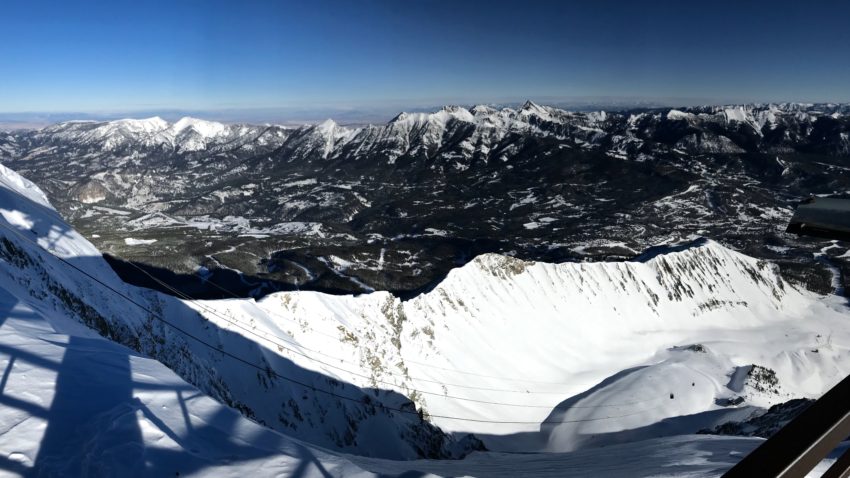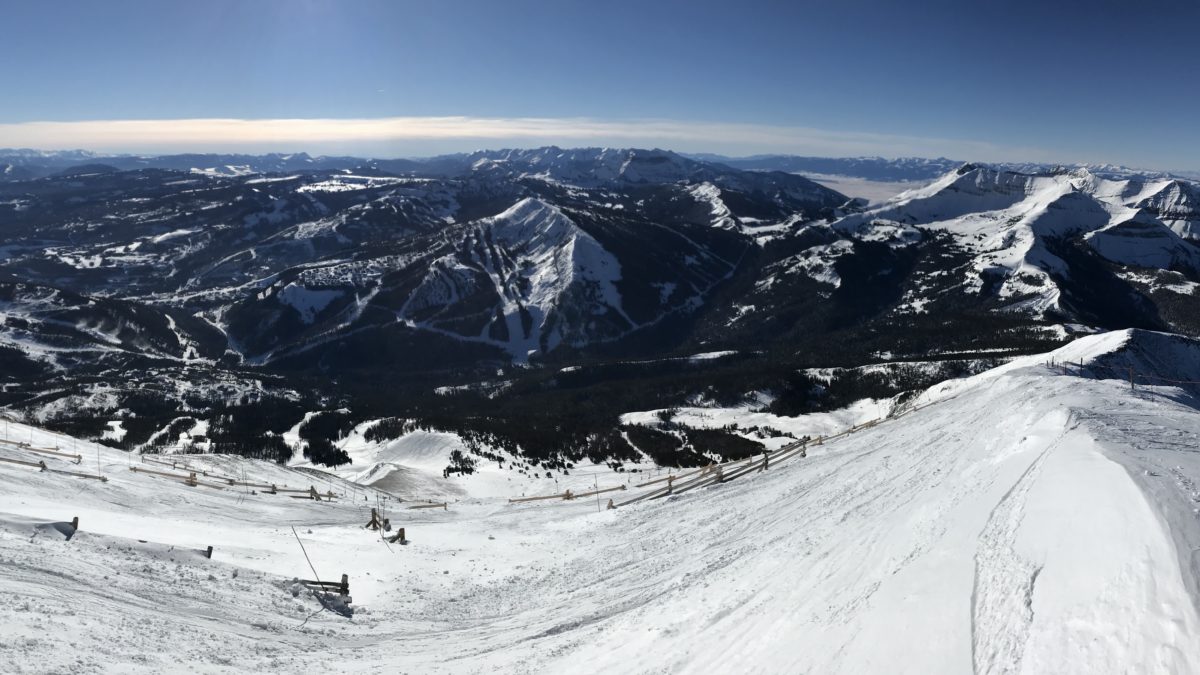Big Sky Resort in Montana is aptly named. The views from the top of Lone Mountain are breathtaking. Stepping off the tram onto the top of Lone Mountain, soaking in the view, and then skiing down the mountain is an experience I’d recommend to every skier or boarder. The combination of a beautiful location in the mountains, a semi-arid climate, and a growing town within the greater Yellowstone ecosystem presents several environmental challenges. Two that immediately came to mind for me are water use and land use and development. Sure enough, I came across interesting things happening in both areas. Let’s take a look at the environment of Big Sky.
Effluent water for snow making
Big Sky is looking into using treated wastewater, or effluent, to make snow. Let me break that down. When you flush the toilet the water goes to the water treatment plant. After the water has is cleaned, you could end up skiing on that water as man-made snow. Does that make you queasy? What do you think happens to that treated sanitary water? In most places with water treatment facilities, the sanitary water is treated (cleaned) and then pumped into a reservoir or a natural body of water. More communities are pursing turning treated wastewater directly back into potable (drinkable) water. Toilet to tap. It’s not as dramatic as it sounds. Right now, your drinking water probably comes a body of water that has fish and other critters in it.
In Big Sky, the Big Sky Water and Sewer District has a zero-river-discharge system. That means the utility is not allowed to discharge that treated water directly into a natural body of water. The Gallatin River is the main river leaving the area. Therefore, the treated wastewater is stored in ponds and tanks and used for irrigation at Big Sky resort, and nearby resorts and golf courses.
What is the best use of treated wastewater – pumping it into a river, using it to water a golf course, turning it back into drinking water, or making man-made snow? In 3 of those 4, the water is sent back into the natural water drainage. Using it for irrigation and snow making slows down the re-absorption into the water system. That helps prevent the surface waters from overflowing or flooding. Pumping it back into a stream can change the natural water chemistry and conditions. The other option, turning it directly into usable water, reduces the amount of water needed from surface and/or groundwater.
There is no right answer that works in every situation. Reusing the effluent water for snow making is relatively new, which is why Big Sky hasn’t started it yet. Several ski resorts around the country are already doing this. Since Big Sky is currently using the water for irrigation, it might not be long until they turn the effluent into snow. In the future, if you’re making early season turns at Big Sky, you could be skiing on the same water that you showered in.
Land Use and Development
Big Sky is a desirable place for people to visit and live near. And access to what used to be a remote location will continue to improve. But where do you build all those new homes, condos, and shopping centers in the mountains? Where do you get the water to support all that growth? How do you balance growth, land use, natural beauty, and natural resources? That is the ultimate management challenge of the arid to semi-arid west. From big cities like Denver and Las Vegas, to resort towns like Park City and Big Sky, it’s something they’re all dealing with. Thankfully, I’m not the only person thinking about this.
In September 2018, the Biennial Scientific Conference on the Greater Yellowstone Ecosystem was held in Big Sky. The focus was Tracking the Human Footprint. A group of scientists, policymakers, and towns working to find that balance.
Spill! When it all comes together.
In 2016, 30 millions gallons of treated wastewater spilled from the Yellowstone Club, a private resort adjacent to Big Sky, into the Gallatin River. From reports, the spill occurred when an ice formation moved a pipe, which released the water from a holding pond. This combines everything mentioned above: a resort community, effluent water being held for future use (probably to water a golf course), the mountain geography and climate providing the ice, and then polluting a beautiful mountain river, which is one of the very reasons people want to be in this area. The fallout for the Yellowstone Club was a $256,700 fine from the Montana Department of Environmental Quality. That money is part fine, part payment to the MTDEQ, and most of it is for projects to improvement the water quality management in the area.
30 million gallons of relatively clean water spilled into a river isn’t the worst environmental incident. But for a location that is all about the mountains, skiing, fishing, and hiking, it’s significant. It’s another wrinkle in the balance to conserve and enjoy our natural resources.
Back to the toilet to snow idea. If they can use the effluent for early season snow making, that could lead to better early season ski conditions. That could then lead to more people coming to to Big Sky, which leads to more water use, and more demand on condos, etc. You see where I’m going with this.
How would you feel about skiing on treated wastewater? If you golf, you’re already walking on it. Do you live in the west. What challenges is your town facing in the balance between land use, recreation, natural resources, and growth?


